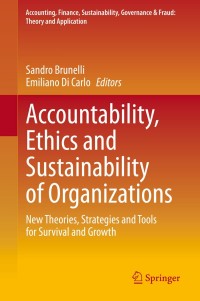Question
Please send the solutions for these numericals in Cost Accounting: 31. From the following figures, find the break-even volume: Selling Price Per ton Rs. 69.50;
Please send the solutions for these numericals in Cost Accounting:
31. From the following figures, find the break-even volume: Selling Price Per ton Rs. 69.50; Variable Cost per ton Rs. 35.50; Fixed Expenses Rs. 18.02 lakhs. If this volume represents 40% capacity, what is the additional profit for an added production of 40% capacity, the selling price of which is 10% lower for 20% capacity production and 15% lower, that the existing price for another 20% capacity;
32. From the following particulars, find the minimum number of units required to be sold so that no cash loss is incurred; Selling price per unit Rs. 20; variable cost per unit Rs. 10; Administrative Expenses Rs. 10,000; Depreciation Rs. 6,000;
33. Find the cost break even points between each pair of plants whose cost functions are: Plant A Rs. 600,000 + Rs. 12 x Plant B Rs. 900,000 + Rs. 10 x Plant C Rs. 1500,000 + Rs. 8 x Where x is the number of units produced.
34. Component X is manufactured in the machine shop. The annual requirement of the component is 10,000 units. If it is bought out, the lowest quotation from an outside supplier is Rs. 8.00 per unit. The following expenses of the Machine shop apply to manufacturing of component X: Materials Rs. 35,000; Labour Rs. 56,000; Indirect Labour Rs. 12,000; Power and Fuel Rs. 600; Repairs and Maintenance Rs. 1,000; the sale of Machinery used for manufacture of the component X would reduce depreciation by Rs. 4,000 and Insurance by Rs. 2,000; If component X is bought out the following additional expenses are incurred: Freight Rs. 1.00 per unit, Inspection Rs. 10,000 per annum; You are required to prepare a report to the Managing Director showing the comparison of expenses to Machine shop when (i) component X is made and (ii) when bought out.
35. A radio manufacturing company finds that while it costs Rs. 6.25 each to make component Z, the same is available in the market at Rs. 5.75 each, with an assurance of continued supply. The break-down of costs is as follows: Materials 2.75 each; Labour 1.75 each; other variable costs Rs. 0.50 each; Depreciation and other Fixed costs Rs. 1.25 each; a) Should the company make or buy? b) What would be your decision if the supplier offered the component at Rs. 4.85 each?
36. The cost of manufacturing of 8,000 units of X product is given below: Direct Materials Rs. 8,000; Direct Labour Rs. 64,000; Variable Overheads Rs. 32,000, Fixed Overheads Rs. 40,000; Fixed Overhead is inclusive of Rs. 24,000 that continues regardless of the decision. The same product is available in the market for Rs. 16 per unit. Should the company make of buy the product?
28. An automobile manufacturing company finds that while the cost of making in its own workshop part no. 0028 is Rs. 6.00 each, the same available in the market at Rs. 5.60 with an assurance of continuous supply. Write a report to the Managing Director giving your views whether to make or buy this part. Give also your views in case the suppliers reduce the price from 5.60 to 4.60. the cost data is as follows: Materials Rs. 2.00, Direct Labour Rs. 2.50; other variable overheads Rs. 0.50 Depreciation and other fixed costs Rs. 1.00;
29. Auto parts limited has an annual production of 90,000 units for a motor component. The components cost structure per unit is given below: Materials Rs. 2.70; labour (25% fixed) Rs. 180; Variable Expenses Rs. 90; Fixed Expenses Rs. 135; Total Rs. 675; The purchase manager has an offer from a supplier who is willing to supply the component at Rs. 540. Should the component be purchased? Assuming that the resources now used for the purpose of this components manufacture can be used to produce a new product for which the selling price is Rs. 485, is it advisable to divert the resources for producing the new product, if it uses materials of Rs. 2.00 per unit and has the same cost for labour and expenses.
30. The Managing Director of a company seeks your advise in arriving at a decision whether to continue manufacturing a component or to buy it from outside. The component is used in several of companys products. The following information is available. i. The annual requirement is 40,000 units; ii. The lower price quotation from a supplier was Rs. 27.50 per unit. iii. The costs incurred last year when 40,000 components were produced is as under: Materials Rs. 12,00,000; Labour (Direct) Rs. 15,00,000; Indirect Labour Rs. 4,00,000; Light and Heat Rs. 80,000; Power Rs. 120,000; Depreciation Rs. 7,00,000; Property Taxes and Insurance Rs. 70,000; Miscellaneous Rs. 150,000; iv. The following proportions of the variable costs could be avoided if production of the component is discontinued. Materials 35%; Direct Labour 40%; Power 25%; v. If the component is purchased from an outside supplier, average freight cost will be Re 0.50 per unit. Also indirect labour would increase by Rs. 30,000 on account of receiving, handling and inspecting the purchased parts.
Step by Step Solution
There are 3 Steps involved in it
Step: 1

Get Instant Access to Expert-Tailored Solutions
See step-by-step solutions with expert insights and AI powered tools for academic success
Step: 2

Step: 3

Ace Your Homework with AI
Get the answers you need in no time with our AI-driven, step-by-step assistance
Get Started


